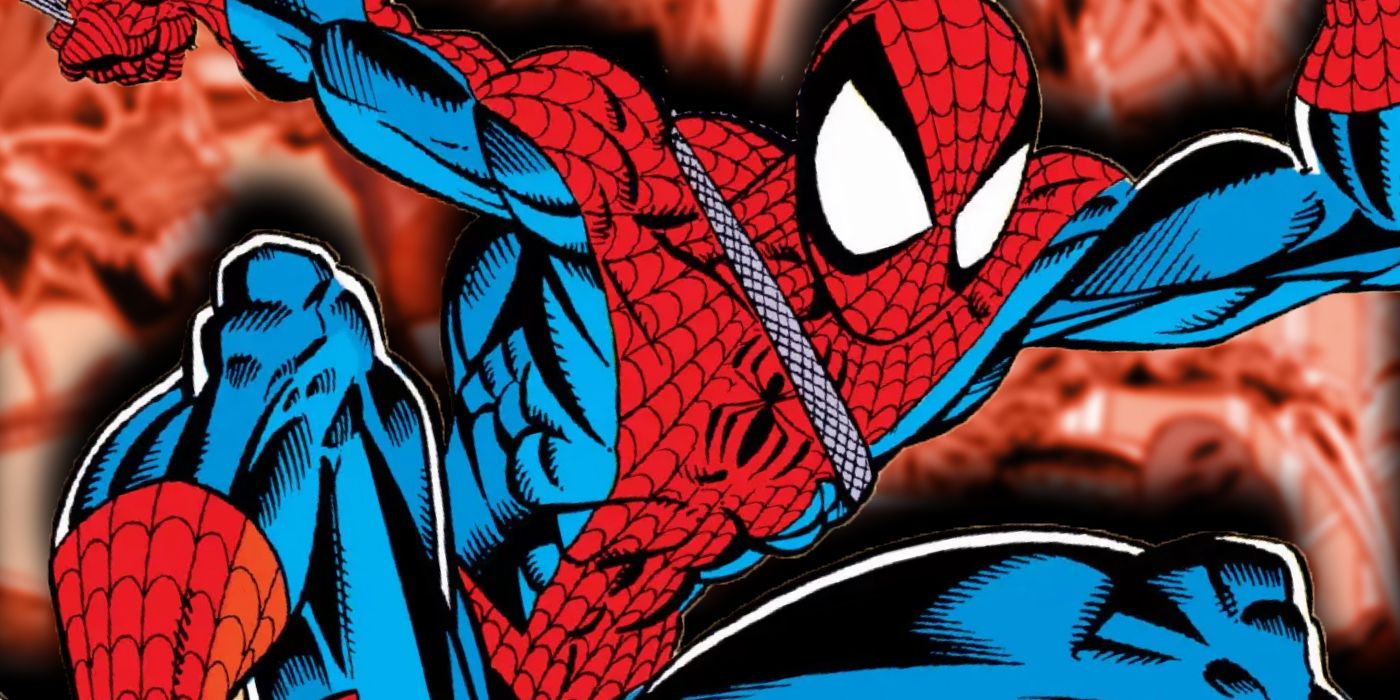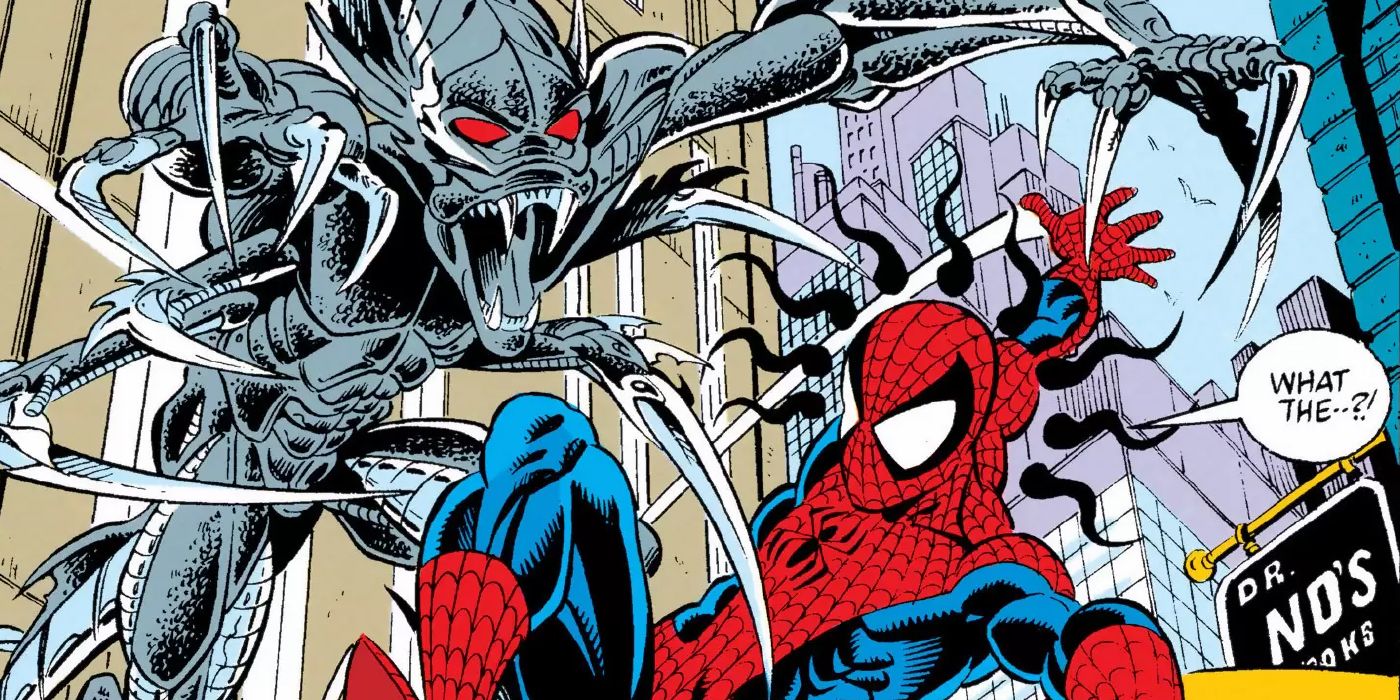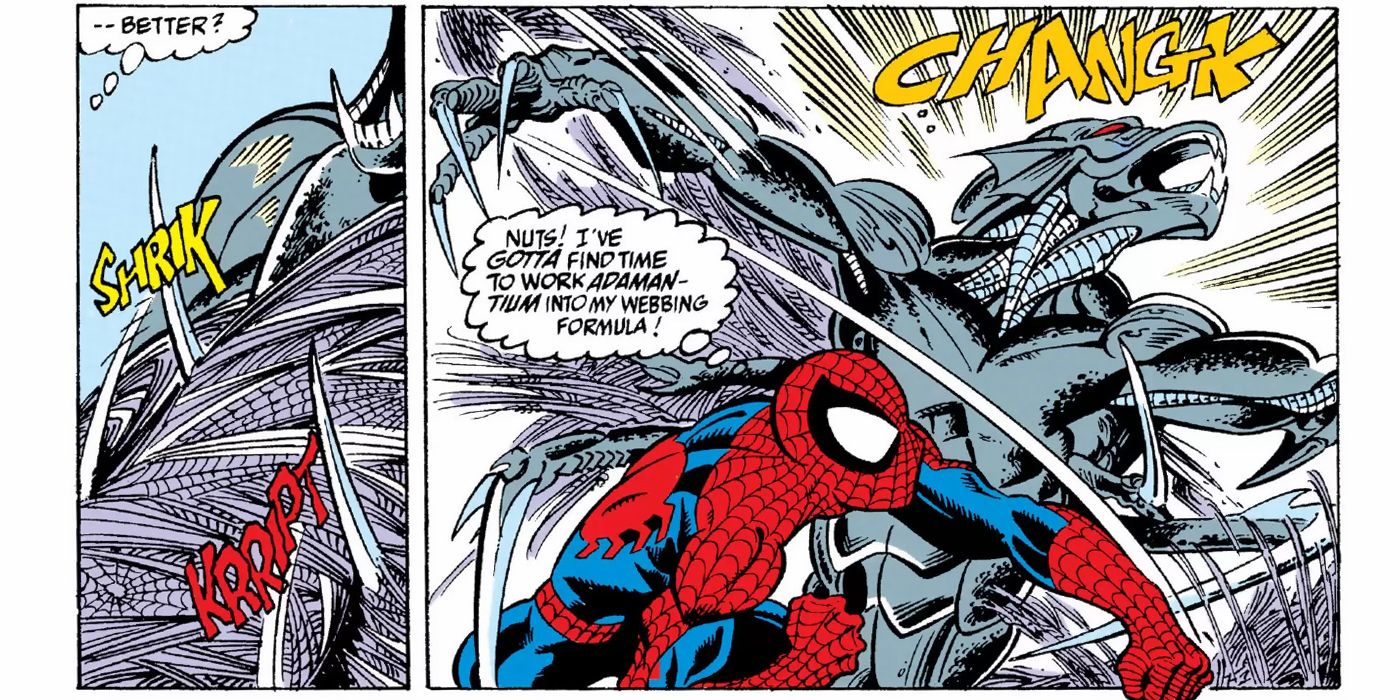Designed for the express purpose of hunting down Spider-Man, the line of robots known as Spider-Slayers has proven itself to be one of the web-slinger's deadliest adversaries. Although Spider-Man has always managed to triumph over each model of Slayer sent his way, each successive robot increased on the strengths and eliminated the weaknesses of the previous model.
Although the Spider-Slayers' appearances and abilities often vary radically between each new edition, the fact that they are machines places some hard limits on what they can do and how they work, providing some level of consistency to their otherwise ever-changing threat. However, one model, Spider-Slayer Mark X, broke the mold by embracing a more cybernetic design that closely resembled the Alien franchise's iconic Xenomorph. Dubbed the "Alien Spider-Slayer", this terrifying machine hinted at a horrifying shift in the Slayers' design that never came to be.
The very first Slayer debuted in Amazing Spider-Man #25 (by Stan Lee and Steve Ditko). To secure more funding for his robotics research, Spencer Smythe presented the Slayer to J. Jonah Jameson of the Daily Bugle, showing off the machine's ability to track down arachnids and offering to send it after Spider-Man for a price. Although Spider-Man ultimately escaped from the Slayer, it nearly succeeded in capturing him. encouraging Smythe to create more advanced Spider-Slayers.
Spencer's work on the Slayers would eventually cause him to develop a lethal case of radiation poisoning in Amazing Spider-Man #192 (by Marv Wolfman, Keith Pollard, Jim Mooney, Glynis Wein, and Diana Albers), but his son Alister would carry on his legacy. Driven by his hatred for Spider-Man, who he held responsible for his father's death, Alister allied himself with Wilson Fisk, aka the Kingpin, to fund his work and designed his Slayers to kill Spider-Man rather than capture him, turning the Slayers into an even greater threat.
Alister's obsession with killing Spider-Man grew every time the wall-crawler defeated one of his Slayers, something that eventually began showing in his work. With each new model, the Slayers moved further and further away from their mechanical roots, taking on more organic qualities as Alister's expertise increased while his sanity did the opposite. By Amazing Spider-Man #368 (by David Michelinie, Mark Bagley, Randy Emberlin, Bob Sharen, and Rick Parker), Alister had moved on to cybernetics, resulting in the birth of a twisted Slayer that ambushed the hero, who was reeling from the apparent return of his long-lost parents.
Spider-Slayer Mark X was completely different than any model that came before it, looking and acting more like a monster than a machine. With razor-sharp claws and a feral demeanor, the Mark X was more "alive" than any previous slayer, snarling and hissing as it relentlessly hunted its prey across the rooftops. Spider-Man was so overwhelmed by the Slayer's ferocity that all he could do was run away from it until was killed by a jackhammer-wielding construction worker, who was inspired to act after remembering that Spider-Man had recently saved his son from a rampaging Carnage. Although this Slayer would never re-appear in comics, it did make an appearance as an enemy in the 1995 Spider-Man video game on Sega Genesis and Super Nintendo, where its nature as a purely-mechanical entity is called into question by the game's manual.
At the time, the Mark X's shift towards a more organic design seemed to hint at an evolution in the Slayer's overall design from spider-themed robots into cybernetic beasts. The reveal that Alister had incorporated cybernetics into his own body in the following issues made this change seem even more plausible. However, the Slayers that followed the Mark X would return to the aesthetic of the older models, with the Slayers designed by Marla Jameson fully resembling robots, not animals. Although Alister would continue making Slayers up until his death in Superior Spider-Man #13 (by Dan Slot, Christos N. Gage, Giuseppe Camuncoli, John Dell, Terry Pallot, Antonio Fabella, and Chris Eliopoulos), none of them would incorporate the organic-inspired designs and behaviors that made the Mark X so unique, seemingly ending the age of the cybernetic Slayer before it even began.



